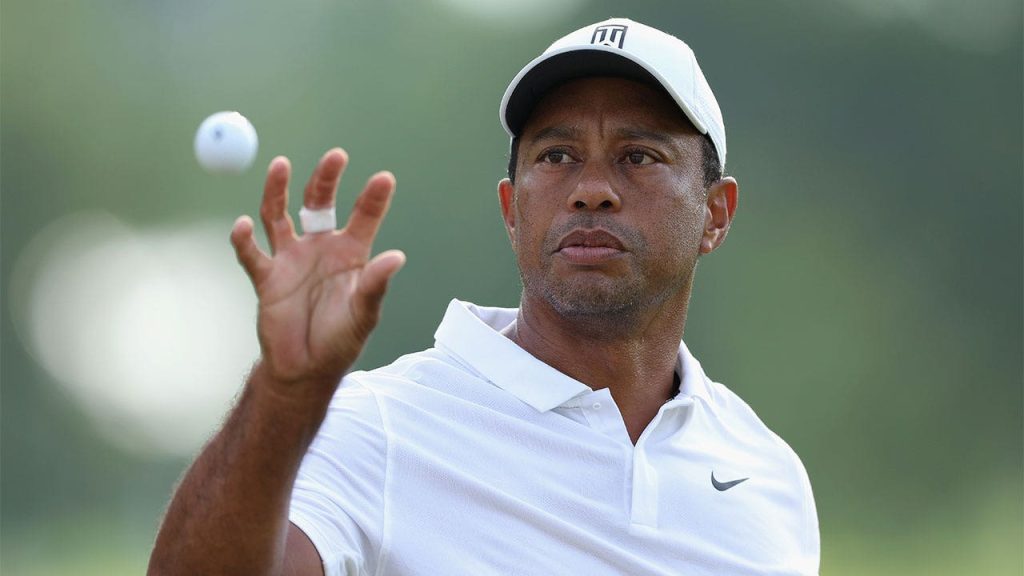Tiger Woods Faces New Health Setback with Spinal Surgery
In a concerning development for golf fans worldwide, Tiger Woods has recently undergone lumbar disk replacement surgery, adding another chapter to his challenging health journey. The 49-year-old golf legend announced Saturday that he had been experiencing significant pain and mobility issues in his back, prompting medical consultation. After thorough examination, doctors discovered a collapsed disc in his L4/5 region, along with disc fragments and a compromised spinal canal, necessitating surgical intervention. Woods expressed optimism about his decision, stating, “I opted to have my disc replaced yesterday, and I already know I made a good decision for my health and my back.” This positive outlook comes despite the procedure being yet another setback in what has become a difficult pattern of injuries for the iconic golfer.
This spinal surgery is merely the latest in a series of health challenges that have significantly impacted Woods’ career in recent years. Just last September, he underwent an operation to address a nerve impingement in his lower back. Additionally, he’s been sidelined from the PGA Tour this year while recovering from a ruptured Achilles tendon suffered in March. Perhaps most notably, Woods sustained multiple severe leg injuries in February 2021 when he was involved in a single-vehicle rollover crash near Los Angeles. These compounding health issues have dramatically altered the trajectory of what was once considered one of the most dominant careers in sports history, raising questions about how much competitive golf remains in Woods’ future.
The impact of these injuries on Woods’ performance has been unmistakable, creating a stark contrast between his earlier dominance and current struggles. Since finishing tied for ninth at the 2020 Farmers Insurance Open, his best result in 18 official events has been a modest tie for 37th at the 2020 PGA Championship. Last year provided little relief, as Woods competed in just five events—the Genesis Invitational and the four majors—with disappointing results throughout. He withdrew from the Genesis, finished last in the Masters, and missed the cut in the remaining three majors. His 2023 and 2022 seasons followed similar patterns of limited participation and underwhelming finishes, highlighting how these physical challenges have affected his ability to compete at the highest level consistently.
What makes Woods’ current situation particularly poignant is how it contrasts with the brief resurgence he experienced just a few years ago. In 2018, Woods seemed to be recapturing some of his former glory when he finished second in the FedEx Cup standings. This comeback appeared complete in 2019 when he won the Masters in dramatic fashion, capturing his 15th major championship and first since 2008. That victory at Augusta National represented one of sports’ greatest comeback stories, as Woods overcame years of physical pain, personal struggles, and multiple surgeries to once again don the green jacket. The emotional scenes of Woods embracing his children beside the 18th green provided what many hoped would be the beginning of a career renaissance, rather than a final crowning achievement.
Instead, Woods’ trajectory since that inspiring Masters victory has been marked by consistent struggles. In the 14 majors since winning at Augusta in 2019, he has failed to achieve a single top-20 finish—his longest such drought since the initial six majors of his career in 1995 and 1996 when he was just starting out as a professional. Looking at a broader sample, Woods has managed only four top-20 finishes in his last 26 major appearances, statistics that underscore how significantly injuries have diminished the competitive capabilities of a player once considered unstoppable. Following the U.S. Open earlier this year, Woods himself acknowledged that it “may or may not” have been his last appearance in that particular major championship, a candid admission that reflects the uncertainty surrounding his playing future.
As Woods approaches his 50th birthday this December, this latest surgery inevitably raises further questions about what lies ahead for the golfer who transformed his sport and transcended the boundaries of athletic fame. Throughout his career, Woods has demonstrated remarkable resilience and determination, repeatedly fighting back from injuries that would have ended most careers. Yet each new setback presents another mountain to climb at an age when most professional golfers are already transitioning to the senior circuit. While fans worldwide hope to see Woods compete meaningfully again, this spinal surgery represents more than just another medical procedure—it symbolizes the ongoing battle between an athlete’s competitive spirit and the physical limitations that eventually confront us all. Whether Woods can once again defy the odds remains to be seen, but his legacy as one of sports’ greatest competitors and most influential figures is already secure, regardless of what the future holds for his playing career.















